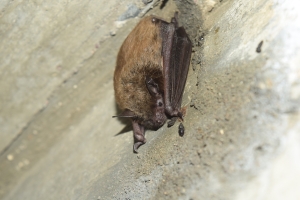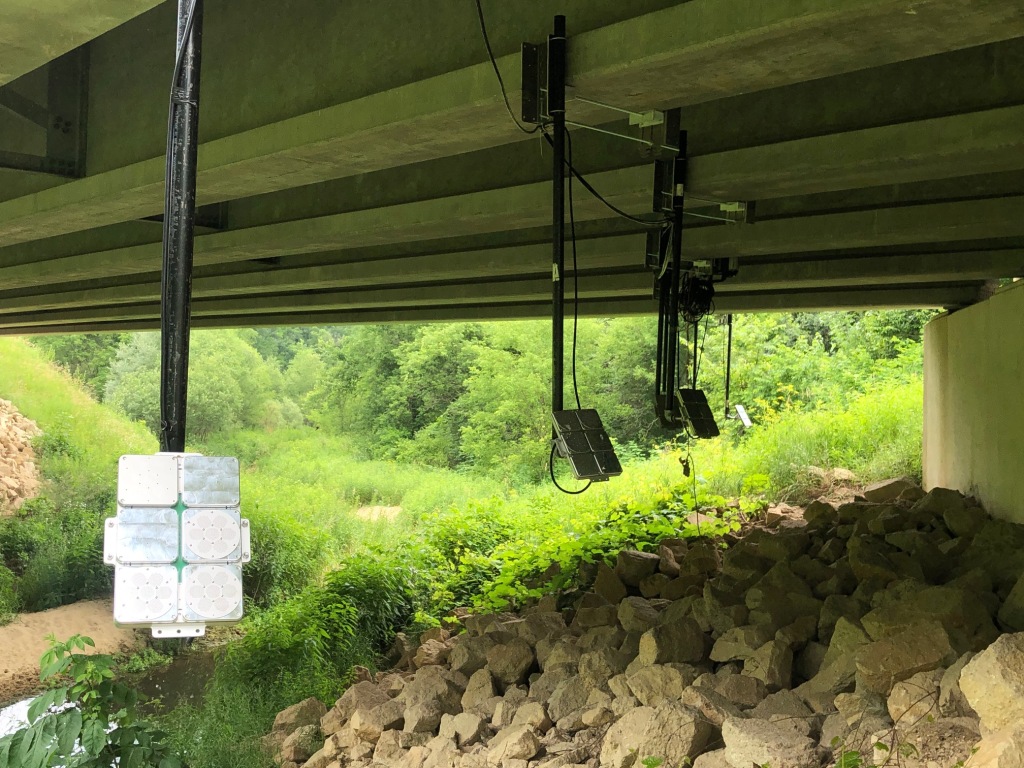MnDOT has funded a study to evaluate the use of non-lethal ultrasonic acoustic devices to temporarily deter bats from bridges before and during construction projects.
Background

When protected bats roost or form colonies on bridges, bridge repair and replacement projects have to follow regulatory requirements to minimize impacts on species protected by state and federally regulations – including the Endangered Species Act. These regulations protect bat populations that have already declined due to white-nose syndrome, which is estimated to have killed more the 5.7 million bats in eastern North America since 2006. The northern long-eared bat (Myotis septentrionalis) is listed as a threatened species as it is one of the species most impacted by white-nose syndrome. Other species are anticipated to be protected as the disease spreads.
To minimize disturbance to protected bats, which may use bridges both for day roosting habitat and sites for maternity colonies where bats give birth and raise their young, MnDOT is evaluating the feasibility and efficacy of ultrasonic acoustic devices to temporarily deter bats from work areas on bridges. These devices emit a sound, inaudible to humans, that disrupts the bat’s ability to echolocate and therefore discourages bats from approaching. This new technology has been utilized for wind turbines with positive results.

Temporarily deterring bats from a work site saves taxpayers money and increases bat safety. Regulations for protected species can limit activity that is potentially harmful, including bridge work during times when bats may use bridges for roosts or maternal colonies. Without the use of deterrents, work may be delayed until bats vacate the bridge, which may not occur until bats retreat to hibernacula (such as caves and mines) for the winter. Having control over when bats are present will provide more predictable timelines to projects and reduce engineering and administrative costs associated with delays and changes to work plans. Without a control measure, projects must adhere to timing restrictions that increase construction costs and may even reduce bridge life expectancy. And if bats are kept away from construction sites, they will not be directly harmed or disturbed by the activity.
Project Scope
This one-year study will investigate the efficiency and feasibility of ultrasonic bat deterrent technology for temporary exclusion of bat species on bridges by monitoring bat presence before the ultrasonic devices are installed, during a trial period, and after devices are removed. This technology will be tested on two bridges in Minnesota. Findings (expected in May 2020) will determine if ultrasonic bat deterrent technology can be utilized to exclude bats from construction and maintenance work zones, thereby reducing costs and ensuring the safety of protected species.
Watch for new developments on this project. Other Minnesota research can be found at MnDOT.gov/research.

